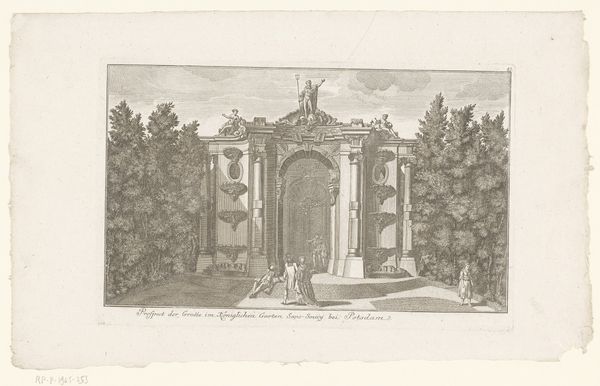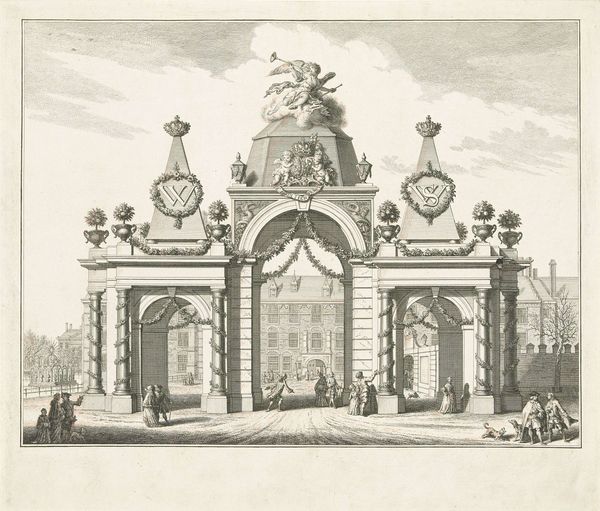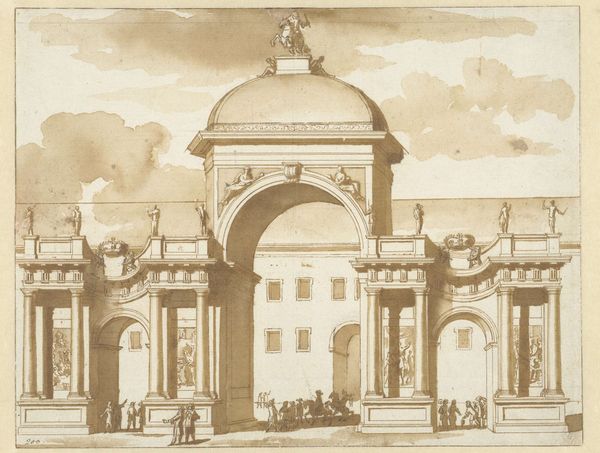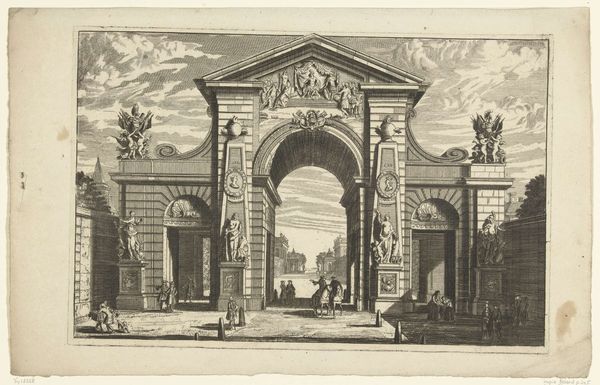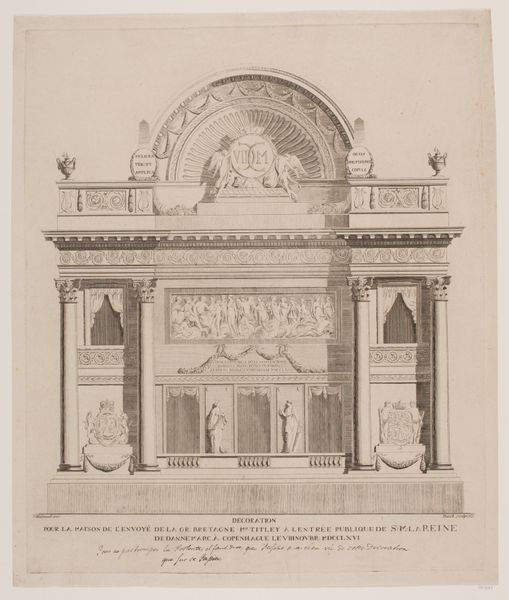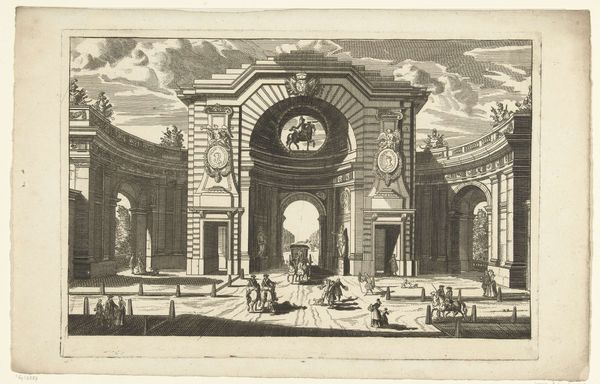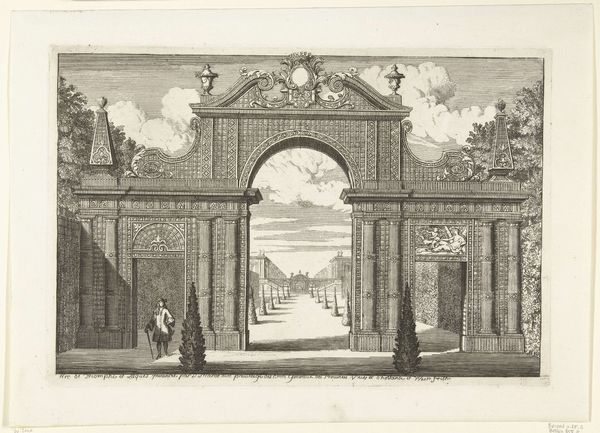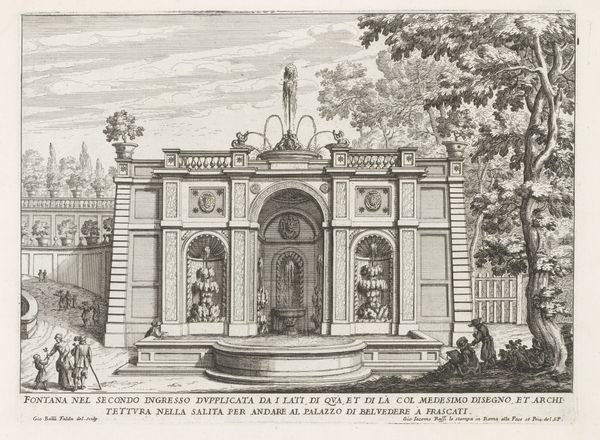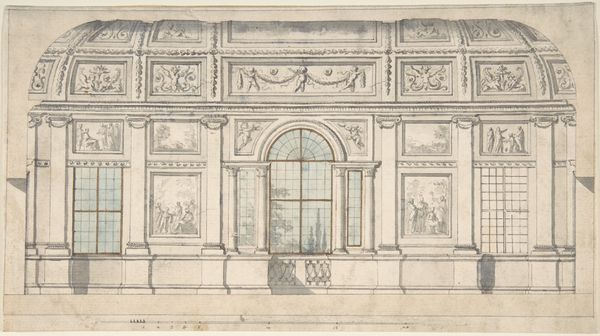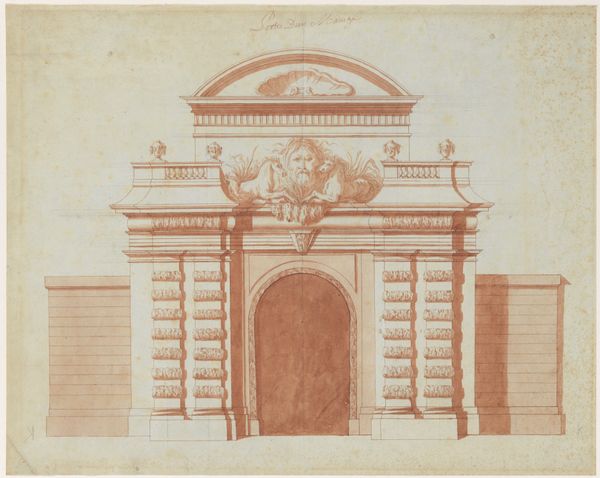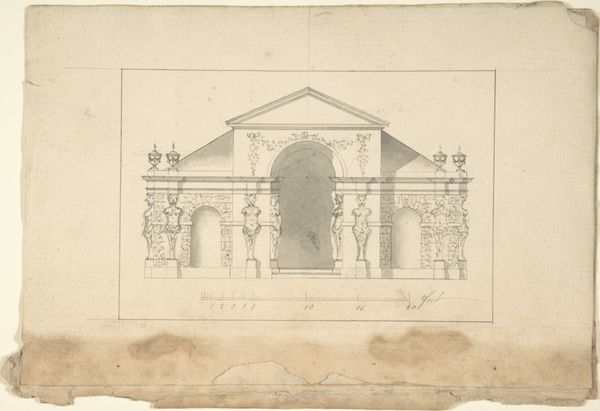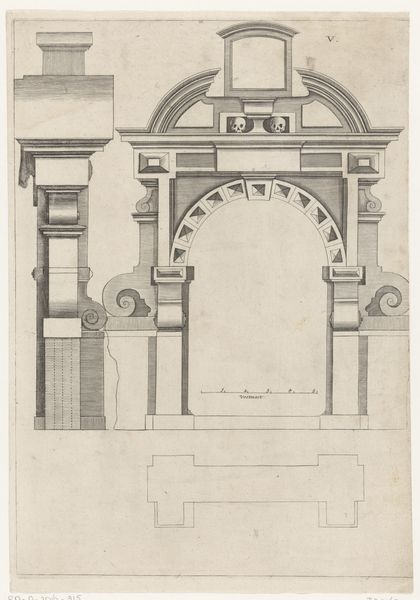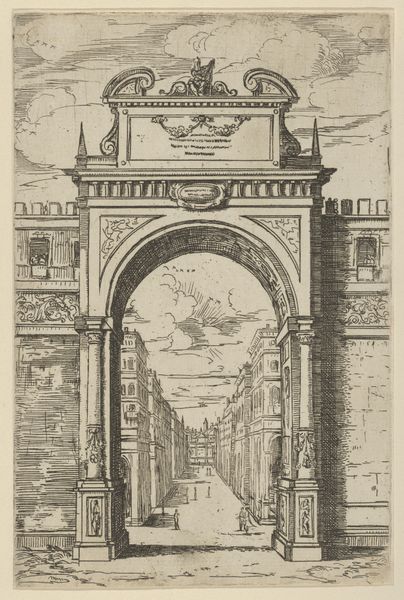
print, etching, engraving
#
neoclacissism
# print
#
etching
#
etching
#
form
#
line
#
cityscape
#
history-painting
#
engraving
Dimensions: height 241 mm, width 287 mm
Copyright: Rijks Museum: Open Domain
Editor: This is "Destruction of the Aristocracy, Decoration on the Westermarkt, 1795," an etching and engraving by A. Verkerk. It depicts a very formal structure, almost like a stage set. What do you see in this piece, particularly given the title? Curator: This print captures a fascinating moment of revolutionary fervor. Notice the classical architecture – the arch, the columns, the statues. It evokes a sense of established order, but the *destruction* of the aristocracy suggests a forceful overturning of that very order. Think about the French Revolution happening simultaneously. Editor: So the artist is using classical forms to talk about something very un-classical: revolution? Curator: Precisely! And consider the Westermarkt. It’s a public space, a site of commerce and gathering. By staging this "destruction" there, Verkerk links political upheaval to the everyday lives of the people. How does the print engage with contemporary philosophical ideas about revolution, and social hierarchies? It attempts to define visually the changing nature of political power and perhaps explores anxieties and contradictions inherent in revolution. Editor: It’s interesting how the print uses a really traditional artistic style to depict such a radical event. Almost like a visual argument. Curator: Exactly. It makes us question what "revolution" truly means – is it simply destroying the old, or creating something entirely new from its remnants? Also, consider that prints at the time were tools for disseminating revolutionary thought. Did it reach diverse audiences across societal divides, or was it mostly circulated among particular groups? Editor: I see what you mean. Looking at it now, it feels less like a straightforward celebration and more like a complicated reflection on power. Curator: Right. And these layered meanings make it such a powerful piece, reflecting both a specific historical event, and the philosophical debates that accompanied it. It encourages to question traditional artistic representations of radical change, as they navigate shifting identities, challenging conventional art history and cultural expectations.
Comments
No comments
Be the first to comment and join the conversation on the ultimate creative platform.
